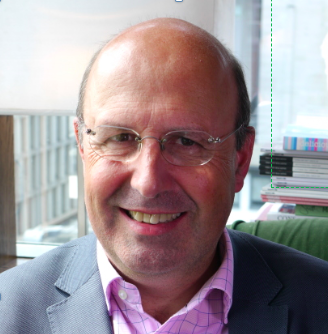You can sign up to our LinkedIn newsletter here.
Finding Freedom: Part One – What Keeps You Caged or Shackled?
It was a famous American president who, during the Great Depression, said, “The only thing we have to fear is fear itself”.
When I speak to people about finding freedom, they often mention various fears—reasons why they can’t, mustn’t, or shouldn’t do something. However, these reasons are usually just a reflection of fear itself. So, how can you examine and assess the reality of your fears? Allow me to outline the ones I observe most frequently.
Too Frightened to Leave
The primary fear I observe when individuals contemplate leaving their current roles is the potential loss of income, status, and opportunities for career advancement. All of these concerns are valid. But how substantial are they? And will they occur regardless—even if you remain where you are?
Consider this on a straightforward scale of one to ten. How likely is it that those three fears will materialise anyway, even if you remain in your current position? How likely is it to occur if you step out of your existing role? How significant will the impact be on a scale of one to ten, with ten being high and one being low?
Now, you’re starting to build a classic risk log. You can examine how to make each risk less likely, reduce the risk, and mitigate the impact.
Compare to Fear of being Sacked
For instance, one way to mitigate the risk of losing income when you are dismissed from your job is to remain actively engaged in the job market. That way, if you receive notice, you already have two or three positions where you are at an advanced stage of discussions regarding the opportunity to join those companies. This would help reduce the risk.
But what if your current role ends and you have no work lined up?
How can you lessen the impact? One approach is to build up savings so that you’re not in a position where every penny you earn is spent in the month it’s earned. You can accumulate savings, and if you’re planning to transition, it’s wise to reduce your expenses beforehand. This will give you a slightly greater financial cushion.
In entrepreneurial terms, this represents your runway: how many months can you manage without income before you reach a standstill?
Planning your Exit
Consider this: if you’re leaving the corporate world, how can you minimise the risk of having no new employment? For individuals I work with seeking to cultivate an executive work portfolio, I strongly recommend initiating that process six months before their departure. After three months, you can evaluate whether your proposal is sufficiently developed and if your pipeline of opportunities is robust enough to submit your three-month notice.
Others can mitigate that risk by negotiating a taper with their current employer to avoid a sudden shift from eighty to zero hours per week. Instead, you can gradually reduce it to four days a week, then three, and eventually two days a week while you build up other clients.
There are ways to lessen the impact of stepping out and the risk of not working. For portfolio executives seeking long-term relationships with two or three fee-earning days each month, I always recommend starting with a new client just one day a week. With three clients, you can replace your entire income with 12 fee-earning days each month and still have time to develop other clients.
Fear you can’t Win Work
By acknowledging these fears, placing them on a risk register, and actively examining their realities, you can transform them from unspoken fears into quantified, measurable, and manageable risks.
Let’s consider a couple of common fears. Perhaps you’re worried that you won’t be able to secure any work. This is a widespread concern. If you’ve always held a back-office role, such as in finance, HR, product development, CTO, or IT, you may be unaccustomed to engaging with a buyer looking to make a purchase. However, the truth is that you already possess numerous influencing skills. You wouldn’t have succeeded in a senior role within a corporate environment if you weren’t capable of influencing others.
The people I work with aren’t being turned into salespeople. All you need to do is enable people to buy.
So, how can you confront this fear? One approach is to prepare in a way that attracts those who wish to buy from you. Refine your LinkedIn profile, create engaging content, begin sharing posts, and enhance your visibility on LinkedIn. Additionally, revitalise your existing network. Reach out and reconnect with individuals, remind them of your presence, and discover where they are now.
Next, begin seeking advice from individuals in your network regarding how you might connect with potential buyers of your services. Utilise LinkedIn direct messaging to initiate a conversation and ascertain if they are interested in purchasing your services.
Ensure you have developed a diagnostic roadmap tool so that individuals can engage with you for a low-cost entry point early in the sales cycle. By preparing, you mitigate the risk of not securing work and alleviate the fear. As we know, it is the fear itself that holds us back.
Fight, Flight, Freeze?
Fear can incapacitate us when it is intensified. The classic response is to fight, flee, or freeze.
Can you realistically fight to keep your job if you are a senior executive? The odds are stacked against you when your employer has decided you should go.
Is flight the best option when you realise your job is at risk? Realistically, your job is perpetually at risk in the modern corporate world. Rather than fleeing, a planned transition to a new work style is more likely to yield the outcome you desire.
People often freeze when faced with the challenges, risks, and fears associated with a significant change in work style.
Regrettably, those who hesitate often discover that control is taken from them, as no job endures indefinitely. Senior positions are particularly prone to being displaced in less favourable economic conditions.
So, don’t allow fear to put you in a situation where your instinct to fight, flight, or freeze causes you to miss opportunities for developing a new work style that provides freedom, joy, and a fulfilling, sustainable working future.
Finding Freedom: Part Three – Small Steps to Freedom

Charles McLachlan is the founder of FuturePerfect and on a mission to transform the future of work and business. The Portfolio Executive programme is a new initiative to help executives build a sustainable and impactful second-half-career. Creating an alternative future takes imagination, design, organisation and many other thinking skills. Charles is happy to lend them to you.
